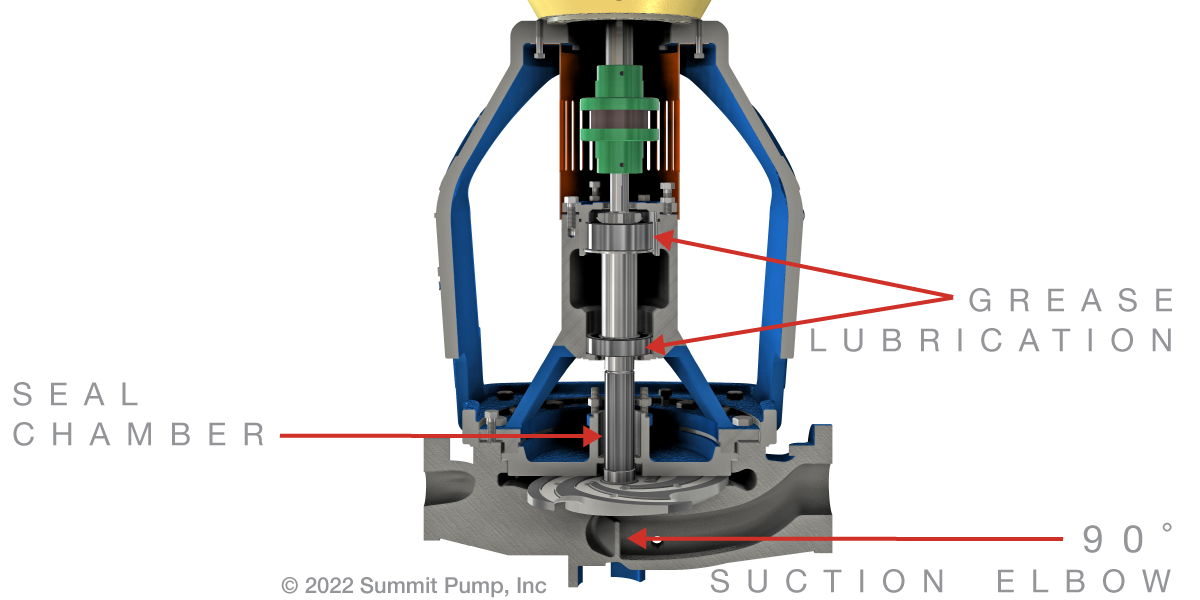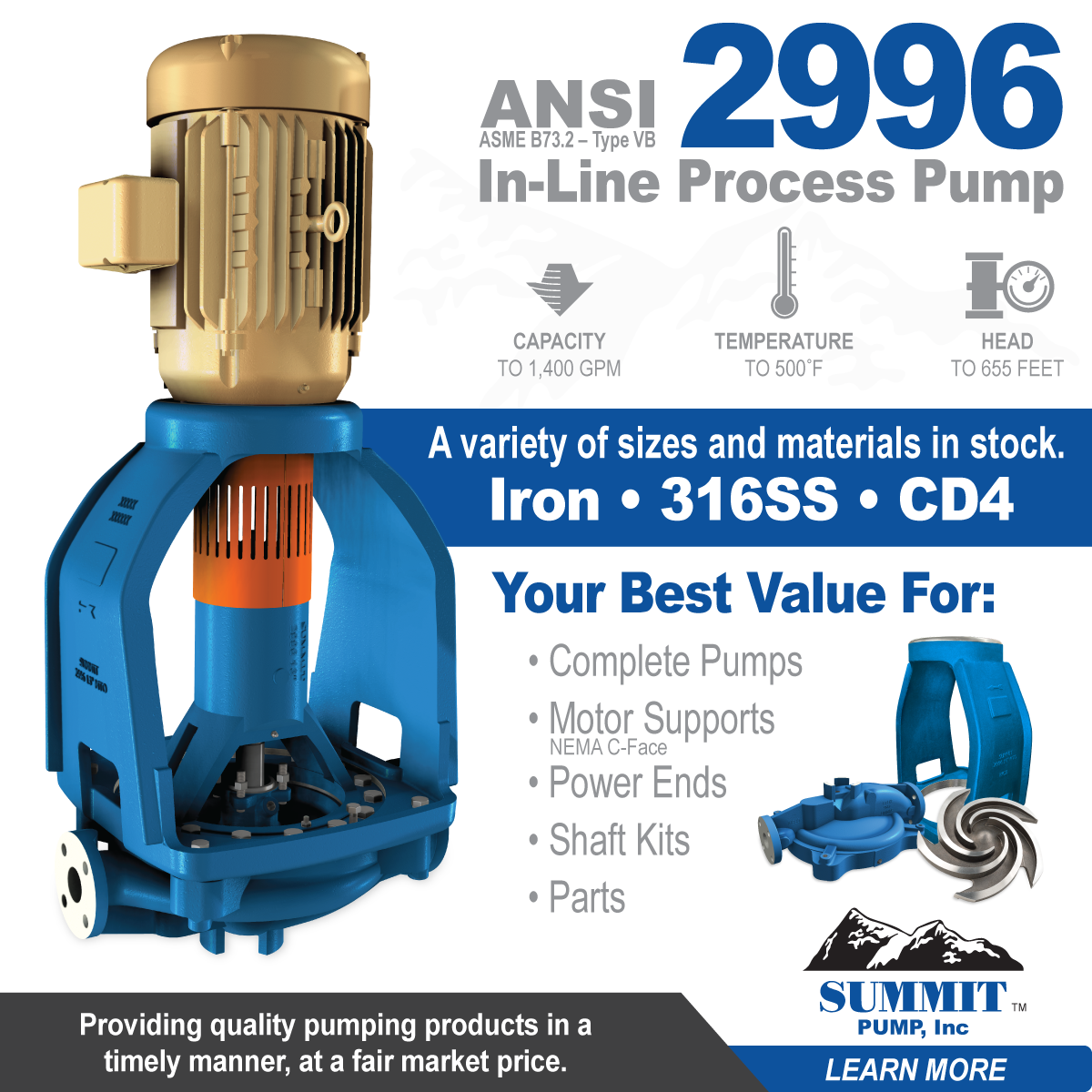Why a Vertical Pump? Vertical pumps offer a smaller footprint than a horizontal pump of the same size making them an ideal solution for applications with limited space. If you could tour the engineering spaces of a nuclear submarine, you would notice that all of the major pumps are vertical. There is consideration for headroom (overhead) because the compartments must be accessible for operations and maintenance. Using a vertical pump will greatly simplify the normally complicated piping arrangements associated with barge loading/unloading, tanker/terminal farms, computer cooling systems, HVAC and Hydronic applications, etc. Additionally, for those unplanned applications where a customer needs to add a pump in an already congested area such as the pump room in a high-rise and/or institutional building, the vertical inline pump can be the perfect solution. One of the most common types of single stage vertical pumps is the inline vertical pump that conforms with the ANSI/Hydraulic Institute standard B73.2 for type OH-3 (VB) pumps. These pumps are designated inline because both the suction and discharge flanges have the same centerline. Similar to installing a common industrial valve, this type of pump will fit directly in line with the piping.  The vertical inline pump does not require a tedious precision alignment of the driver because it is initially positioned, self-aligned and maintained in place by the register (rabbet lock) machine fits to assure positive and permanent alignment. Further, there is no need for a foundation, baseplate, or grout which saves initial installation cost in both materials and labor. Due to the robust design of vertical pump casings, the maximum allowable flange/nozzle load limits are higher than on a corresponding horizontal pump of similar class and size. Consistent with a horizontal ANSI B73.1 pump, the vertical design is also a back pull-out design. This means the mechanical seal, pump shaft and impeller can be maintained without disturbing the piping or the driver. 
Cautionary Notes:Because the pump is vertically orientated, the stuffing box/mechanical seal chamber is the liquid high point in the pump. Air and other non-condensable gases coming out of solution can be trapped in the seal chamber causing damage to the seal. Since the pump is not self-venting it is recommended to be vigilant when venting and priming the pump and to apply the proper seal pipe plan as applicable. Due to the vertical orientation, flooded oil lubrication is not an option. The common solution is to elect grease lubricated bearings.  Because the liquid flow into the pump suction must navigate a 90 degree turn before reaching the impeller, the net positive suction head required (NPSHR) will be slightly higher than similar size horizontal pumps. Additionally, this pump is not recommended for paper stock applications because the suction elbow can potentially become a bottleneck and block the paper stock. Simply because the pump and driver fit neatly “in-line” with the piping does not mean you can ignore the additional weight with regard to pipe stress. Smaller pumps/motors can normally just be installed in the piping but larger units may require some sort of support. Please consult with a piping expert on how to properly support the pump and associated piping system for your application.
Bottom LineGiven the proper application and careful consideration of precautionary measures you may confidently benefit from the small footprint and reduced total cost of ownership (TCO) associated with going vertical.   |